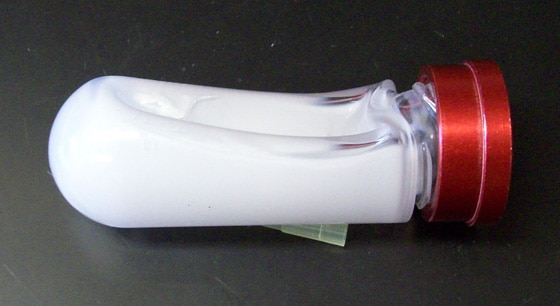The patch-clamp technique was first developed by Neher and Sakmann in 1976 and is used to measure either the currents passing through ion channels (voltage-clamp) or the membrane potential (current-clamp) of electrically active cells. The patch clamping technique is based on a simple premise: the formation of a strong seal between the membrane of a cell or artificial bilayer and a tiny portion of a pipette tip; this is called a gigaseal.
While the premise is simple, the process of obtaining a seal with your patch clamping pipette can be more of an obscure art that requires, among other things, the ability to craft your own pipette. Pipettes for patch clamping are supplied by companies as glass capillaries. You then “pull” a capillary using a programmable puller to obtain two tip-shaped pipettes that can then be used for the experiment.
Here are a few tips on preparing the right pipettes for the job, which will hopefully convert your patching from a frustrating experience to a satisfying one.
Patch Clamping Pipette Material
I still remember during the first month of my PhD learning about the importance of choosing the right material for a patch-clamp pipette. After a frustrating day of getting nowhere, my mentor stepped in to help and promptly laughed at my pipettes. Lesson learned – not all pipettes are created equal!
There are many types of glass pipettes available. Some of the factors to consider when selecting what type of pipette material suits your experiment are the cost, the dielectric constant, and the dissipation factor. The last two parameters are intrinsic characteristics of the material itself and together influence the level of electric noise that will be present in your recording. Electric noise is any disturbance that interferes with the measurement of the desired signal, 1 and is something you should take into consideration when you set up your electrophysiological experiment – even a tiny amount of noise can affect the quality of your measurement.
The most common type of glass used in electrophysiology is borosilicate. It is not prohibitively expensive and has a low dielectric constant and dissipation factor (4.5–6 and 0.002–0.005, respectively), meaning a low level of electric noise. This type of glass pipettes is commonly used and, in terms of quality, is good enough for almost all kinds of electrophysiological experiments.
Quartz pipettes are the best in terms of electric noise (dielectric constant 3.86 and dissipation factor in the order of 10-5 to 10-4), and have the added bonus of being stronger and stiffer than borosilicate pipettes, so less likely to break! That said, quartz pipettes are also expensive and cannot be prepared with a standard platinum filament-based puller, requiring an expensive laser-based puller, which is why they are not as common as borosilicate pipettes.2 However, if you need low-noise single-channel recordings or you just want to use top quality materials, you may want to give quartz a try.
Another option for low-noise recordings is alumina silicate glass (dielectric constant 6.1–7.7 and dissipation factor in the order of 10-3 to 10-2), but, as with quartz pipettes, these are expensive too and difficult (but not impossible) to prepare with a platinum filament-based puller.3
Electrophysiology is time-consuming and requires precision, so don’t waste your time having unproductive days – use the right materials for the job and invest in quality materials when you need to – your experiments (and sanity) will thank you for it.
Thickness and Shape
The thickness of the walls of the pipettes can be determined using the outer diameter (OD) and internal diameter (ID) values, which you will find on the box label. But why should you care about the thickness of your pipettes?
Thick-walled glass tends to produce pipettes with longer tapers and smaller tips that allow you to have recordings with reduced electric noise. They are ideal for patching cultured cells or dissociated neuronal cells.
Thin-walled pipettes tend to be used if you aim to perform slice recordings, low-resistance recordings, or for microinjections. 3
Obtaining the right shape, size and tip dimension is a key factor that determines the success rate of your experiments and is considered by many electrophysiologists to be a kind of art in itself (and would take a few separate articles to cover completely!). The shape is also important in determining the amount of noise you will have in your recording as longer tapers tend to generate more noise than shorter tapers.
Generally, pipettes with a shorter taper are used for patching cells, and pipettes with a longer taper are used for slice recordings or tissue recordings.
The Filament
When performing a patch-clamp experiment you are generally required to fill the inside of the pipette with an electrolytic solution that conducts ions (called back-filling). During this process, air bubbles can be trapped permanently at the tip of the pipette causing the equivalent of a break in an electric circuit.
To overcome this issue, many glass pipettes have a small glass rod running lengthwise along the inner wall. This is called the filament. The filament facilitates back-filling with internal solution, especially if using small-tipped pipettes, and reduces the probability of having air bubbles in your tip. On the other hand, the presence of the filament often increases the noise, which is something you should consider carefully depending on the experiment you are going to perform.
Fire Polishing
Fire polishing is the process by which the tip of the pipette is refined to make it smoother, preventing the glass from damaging the cell membrane (and is also useful for cleaning the tip). Fire polishing is usually carried out by putting the pipette tip under a light microscope and using a heated platinum wire that is gently moved towards the tip. It is not an essential step in preparing your pipette but is highly recommended, particularly if you are struggling to obtain seals with your sample.
Final Remarks
Now that you have a patch clamping pipette made of the right material, that is the right thickness and shape for your planned experiment, remember to work as cleanly and as quickly as you can. Ideally, once your pipette is ready, you should use it straight away – I could rarely patch with pipettes prepared the day before.
Finally, there are plenty of resources out there to help with all your patching needs – I definitely encourage you to read the P97 Pipette Cookbook to start with. 4,5
Do you have any tips for getting that elusive seal? Let us know in the comments. Also if you are interested in Drosophila electrophysiology, check out our article on “The 31 Flavors of Drosophila Electrophysiology Recording Solutions” to get the right solution for you.
Happy patching!
References
- MDS Analytical Technologies. THE AXON GUIDE A Guide to Electrophysiology & Biophysics Laboratory Techniques. MDS Analytical Technologies: Sunnyvale, California, 94089, United States of America., 2020.
- Levis RA, Rae JL. The use of quartz patch pipettes for low noise single channel recording. Biophysical Journal 1993; 65: 1666–1677. DOI:?10.1016/S0006-3495(93)81224-4
- Bykhovskaia M, Vasin A. Electrophysiological analysis of synaptic transmission in Drosophila. Wiley Interdiscip Rev Dev Biol. 2017; 6. DOI: 10.1002/wdev.277.
- Oesterle A. P97 Pipette Cookbook. Sutter instruments Company: Novato, CA 94949 415-883-0128, 2018 doi:10.1002/ejoc.201200111.
- Brown K, Flaming D. Advanced Micropipette Techniques for Cell Physiology. John Wiley & Sons: Chichester, 1995.







